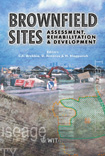Strategic Communications Can Enhance Brownfields Public Participation
Price
Free (open access)
Transaction
Volume
55
Pages
Published
2002
Size
429 kb
Paper DOI
10.2495/BF020131
Copyright
WIT Press
Author(s)
J. G. Duffy & R. M. Omwenga
Abstract
Public participation is generally defined as the process of engaging stakeholders such that those most impacted by a particular activity can influence outcomes of that activity. Although not a recent practice, the importance of public participation has gained prominence in recent years where projects impact natural resources and communities. The United States Environmental Protection Agency (EPA) has and continues to revise its policies with respect to public participation in several agency programs. The purpose of this article is to evaluate the efficacy of public participation with the context of EPA’s Brownfields program, and to make recommendations about how the use of strategic communications can enhance the overall success of the revitalization of the project. 1 Introduction The definition of public participation has evolved over the past several decades. Accordingly, we turn to a variety of sources to provide a comprehensive definition of public participation. It is interesting to observe how its definition is modified to meet unique institutional objectives. In 1981, the U.S. Environmental Protection Agency (EPA) [1] articulated its public participation policy as: \“To ensure that managers plan in advance needed public involvement in their programs, that they consult with the public on issues where public comment can be truly helpful, that they use methods of consultation that will be effective both
Keywords




